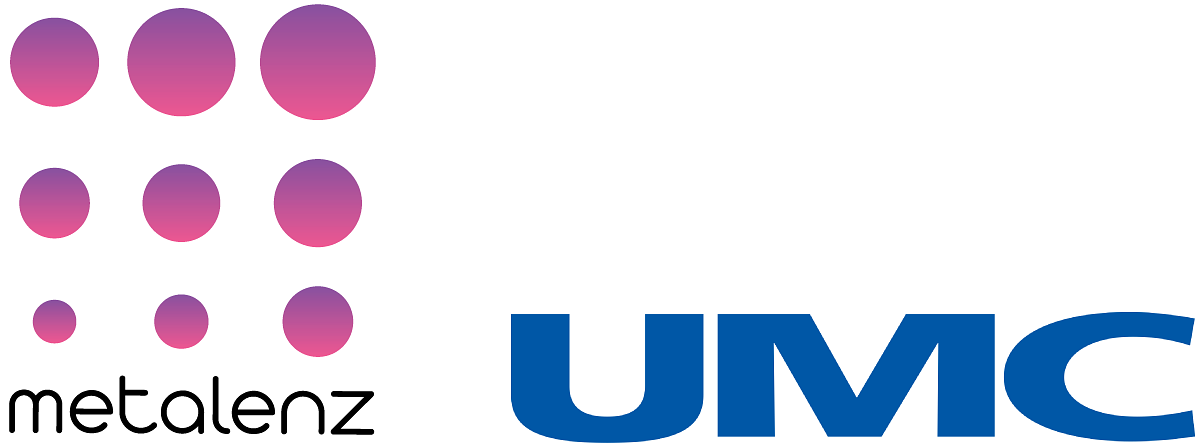
Beyond Face ID: Meta-Optics Poised to Democratize Secure Facial Authentication
A new partnership between Meta-optics innovator Metalenz and semiconductor foundry UMC is set to bring 'payment-grade' security to a wider range of smartphones – and potentially beyond – by bypassing costly traditional sensors.
Beyond Face ID: Meta-Optics Poised to Democratize Secure Facial Authentication
TAIPEI, Taiwan – For years, advanced facial authentication, akin to Apple’s Face ID, has largely been limited to premium smartphones. Now, a partnership between Meta-optics innovator Metalenz and semiconductor foundry UMC is poised to change that, potentially bringing “payment-grade” security to a wider range of devices – and beyond – by bypassing costly traditional sensors. The collaboration centers around Metalenz’s groundbreaking meta-optic technology, manufactured at UMC’s advanced facilities, offering a pathway to more affordable and secure facial authentication for the mass market.
Disrupting the Sensor Landscape
Traditional 3D facial authentication systems often rely on complex, bulky, and expensive components like structured light or time-of-flight sensors. Metalenz, however, is taking a different approach. The company has developed a meta-optic – a nanoscale structure that manipulates light in ways conventional optics cannot – that can achieve comparable security with a significantly reduced footprint and cost.
“The goal isn't just to make facial authentication more accessible; it's to make it more secure than existing solutions,” explained one industry analyst. “Current systems can be fooled with photos or even sophisticated masks. Metalenz is claiming a level of spoof resistance that could significantly raise the bar.”
How Meta-Optics Work – and Why They Matter
The core of Metalenz’s technology lies in its ability to manipulate the polarization of light. Unlike traditional optics, meta-optics can control light at the nanoscale, allowing for the creation of compact and efficient optical components. This allows Polar ID to extract information, such as facial contour details and liveness detection, from a single image.
The company’s proprietary process, now being scaled at UMC’s 40nm fabrication facilities, involves manufacturing these nanoscale structures on silicon wafers. This approach allows for high-volume production at a relatively low cost. “The key is leveraging UMC’s existing infrastructure,” said a source familiar with the partnership. “They’re not building a brand-new fab; they’re adapting existing processes to manufacture these meta-optics, which significantly reduces the time and cost to market.”
UMC's Role: Scaling Innovation
UMC, a leading global semiconductor foundry, brings critical manufacturing expertise to the table. By utilizing its 40nm process technology and wafer-on-wafer bonding capabilities, UMC is able to reliably and affordably manufacture the complex meta-optic components.
“This partnership is a testament to UMC’s commitment to supporting innovative technologies,” a UMC spokesperson stated. “We’re excited to be working with Metalenz to bring this disruptive technology to market.”
Beyond Security: Potential Applications Abound
While facial authentication is the initial target application, the potential of Metalenz’s technology extends far beyond. The polarization imaging capabilities of the meta-optic could enable a range of new sensing applications, including health monitoring (early skin cancer detection) and environmental sensing (air quality). “The ability to extract information from polarized light opens up a lot of exciting possibilities,” commented another industry insider. “This isn’t just about unlocking your phone; it's about creating a new generation of smart sensors.”
Qualcomm Integration: Democratizing Access on Android
Metalenz has also been working closely with Qualcomm Technologies, integrating its Polar ID solution onto Snapdragon-powered smartphone reference platforms. This is a crucial step towards broad adoption on Android devices, where advanced facial authentication has historically lagged behind Apple’s Face ID.
“By running on Qualcomm Snapdragon, Metalenz is poised to drive large-scale adoption of secure face unlock across the Android ecosystem,” noted a source at a mobile device manufacturer. “This addresses the current disparity and makes advanced security available to a much wider range of consumers.” The solution is implemented within the secure framework of the Qualcomm Hexagon NPU, further enhancing security and reliability.
Competition and Challenges
The facial authentication market is competitive, with established players like Apple and Synaptics. However, Metalenz believes its meta-optic approach offers a unique combination of security, cost-effectiveness, and compactness that sets it apart.
“The key is to demonstrate that our solution is truly more secure than existing systems,” said a Metalenz representative. “We’re confident that our polarization-based approach offers a level of spoof resistance that others can’t match.”
Challenges remain, including the need to scale production and integrate the technology into a wider range of devices. However, with the support of UMC and Qualcomm, Metalenz appears well-positioned to overcome these hurdles and disrupt the facial authentication market. Rumors are also circulating that Samsung is developing a facial recognition system for its future flagship phones, potentially featuring Metalenz’s technology.
The Future of Authentication?
The partnership between Metalenz and UMC represents a significant step towards a future where advanced facial authentication is accessible to everyone. By leveraging the power of meta-optics and the scalability of modern semiconductor manufacturing, these companies are poised to democratize security and unlock a new era of intelligent sensing. This isn't just about unlocking your phone; it's about building a more secure and connected world.
📝 This article is still being updated
Are you a relevant expert who could contribute your opinion or insights to this article? We'd love to hear from you. We will give you full credit for your contribution.
Contribute Your Expertise →